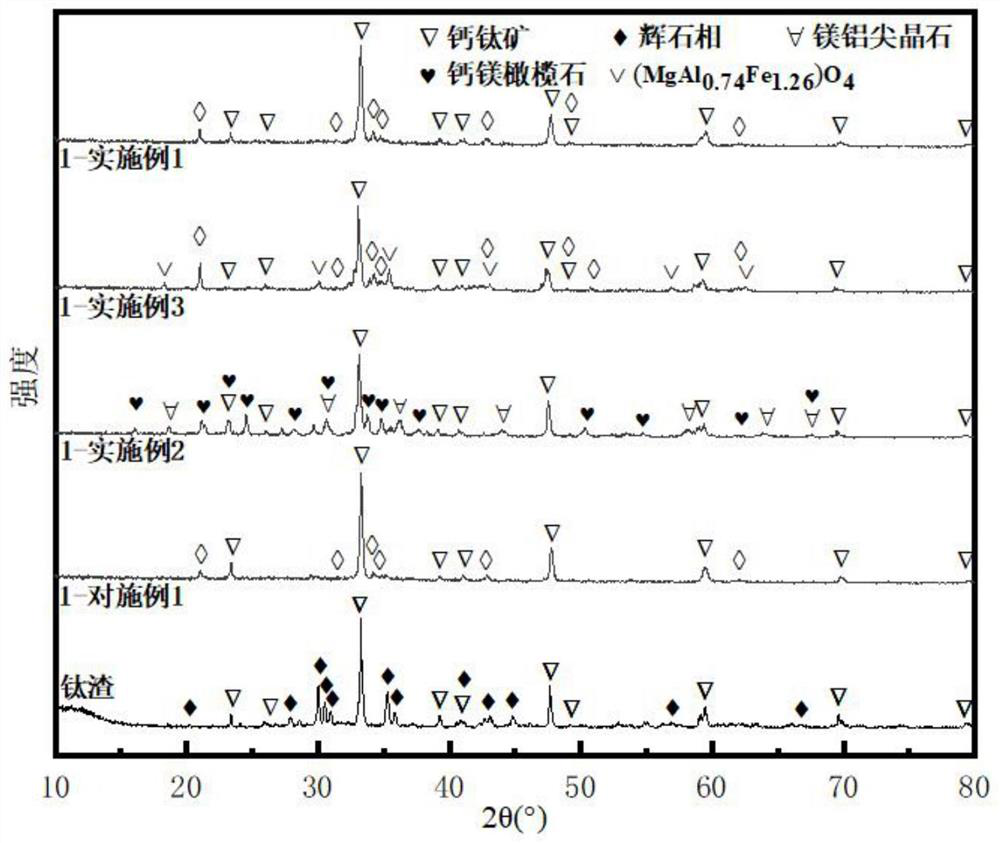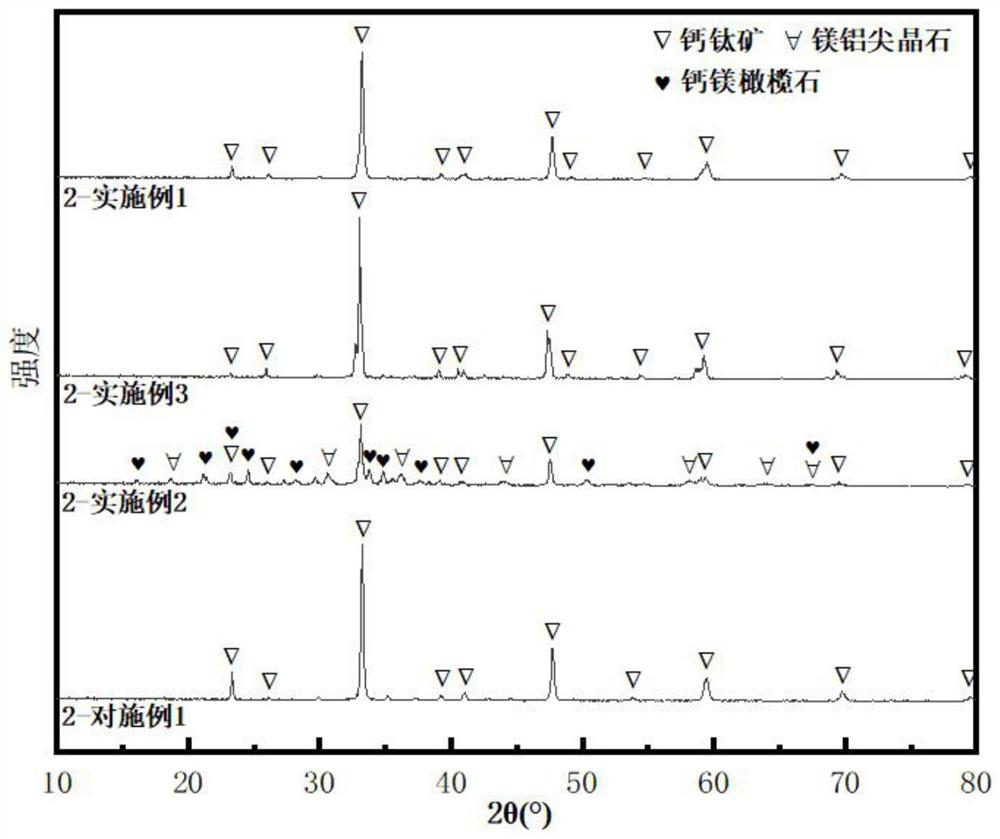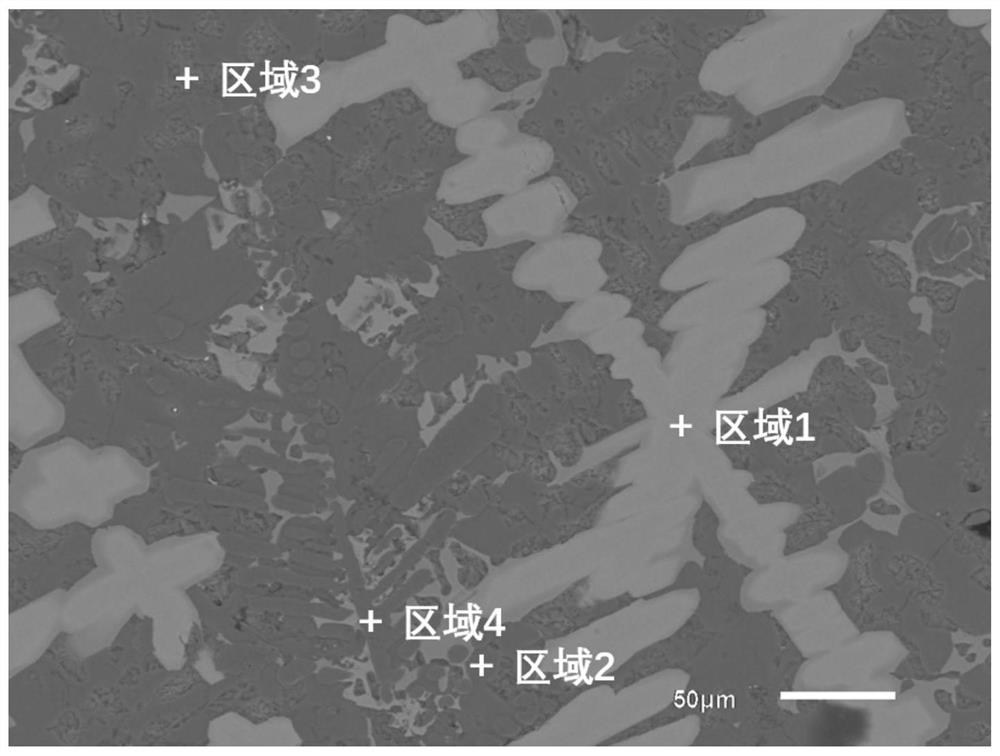Efficient response optical coupling denitration catalyst and preparation method thereof
A denitrification catalyst and optical coupling technology, applied in chemical instruments and methods, physical/chemical process catalysts, separation methods, etc., can solve problems such as large energy consumption, complex process, and poor photoactivity
- Summary
- Abstract
- Description
- Claims
- Application Information
AI Technical Summary
Problems solved by technology
Method used
Image
Examples
Embodiment 1
[0055] The blocky titanium-containing blast furnace slag was crushed and dried, placed in a grinding tank for grinding for 60 seconds, and then 100 g of titanium-containing blast furnace slag powder was mixed with 5 g of analytically pure CeO 2 , 10g analytically pure MnO 2 and 34.5g NaOH particles were mixed and ground evenly and placed in a magnesia crucible, first heated to 350°C for 1 hour to remove bound water and volatile impurities, and then heated to 1500°C in a muffle furnace at a heating rate of 5°C / min Insulated for 1h and cooled to room temperature with the furnace to obtain Ce, Mn-based optimized reconstruction slag, which is denoted as 1-embodiment 1, and its X-ray diffraction image is as follows figure 1 , scanning electron microscope images such as image 3 , X-ray energy spectrum analysis is shown in Table 1.
[0056] Table 1: X-ray energy spectrum analysis of 1-embodiment 1 in embodiment 1 (at%, combine image 3 )
[0057]
[0058] Then 1-Example 1 was...
Embodiment 2
[0062] The blocky titanium-containing blast furnace slag was crushed and dried, placed in a grinding tank for grinding for 60 seconds, and then 100 g of titanium-containing blast furnace slag powder was mixed with 1 g of analytically pure CeO 2 , 1g analytically pure MnO 2 and 5.1g of NaOH particles were mixed and ground evenly and placed in a magnesia crucible, first heated to 250°C for 0.5h to remove bound water and volatile impurities, and then heated to 1350°C in a muffle furnace at a heating rate of 3°C / min ℃ for 2 hours and cooled to room temperature with the furnace to obtain Ce, Mn-based optimized reconstruction slag, which is recorded as 1-Example 2, and its X-ray diffraction image is as follows figure 1 .
[0063] Then 1-Example 2 was crushed and ground, then placed in a ball mill jar for ball milling for 20 hours, after suction drying and grinding, 16 g was poured into 80 ml of 1% HCl solution and leached for 2 hours to strip off non-target components, and then Dilu...
Embodiment 3
[0065] The blocky titanium-containing blast furnace slag was crushed and dried, placed in a grinding tank for grinding for 60 seconds, and then 100 g of titanium-containing blast furnace slag powder was mixed with 10 g of analytically pure CeO 2 , 30g analytically pure MnO 2 and 21g of NaOH particles were mixed and ground evenly and placed in a magnesia crucible, first heated to 300°C for 1 hour to remove bound water and volatile impurities, and then heated to 1500°C in a muffle furnace at a heating rate of 10°C / min. 1h is cooled to room temperature with furnace, obtains Ce, Mn base optimization reconstruction slag, is recorded as 1-embodiment 3, and its X-ray diffraction image is as follows figure 1 .
[0066] Then 1-Example 3 is crushed and ground, then placed in a ball mill jar for ball milling for 12 hours, after suction drying and grinding, 16 g is poured into 400 ml of 20% HCl solution and leached for 1 hour to strip off non-target components, and then Dilute the mixed...
PUM
 Login to View More
Login to View More Abstract
Description
Claims
Application Information
 Login to View More
Login to View More - R&D
- Intellectual Property
- Life Sciences
- Materials
- Tech Scout
- Unparalleled Data Quality
- Higher Quality Content
- 60% Fewer Hallucinations
Browse by: Latest US Patents, China's latest patents, Technical Efficacy Thesaurus, Application Domain, Technology Topic, Popular Technical Reports.
© 2025 PatSnap. All rights reserved.Legal|Privacy policy|Modern Slavery Act Transparency Statement|Sitemap|About US| Contact US: help@patsnap.com



